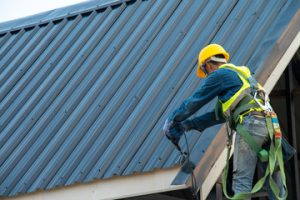Septic Pumping Fresno keeps the unseen parts of a property running smoothly.

Behind every functioning wastewater system lies a rhythm that depends on care and timing. Modern septic pumping goes far beyond the traditional image of basic tank maintenance. It has evolved into a science-driven process focused on sustainability, prevention, and efficiency. This transformation has reshaped how professionals and homeowners view the system beneath their feet.
The old approach treated septic pumping as an emergency fix. Tanks were often serviced only when they overflowed or emitted foul odors. Today, data and sensor technologies encourage proactive maintenance rather than crisis management. Regular pumping schedules now align with environmental care and long-term savings.
Every septic system works like a living ecosystem. It relies on bacteria to break down organic matter efficiently. When waste levels rise too high, this balance collapses, leading to clogs and leaks. Timely pumping protects that microbial harmony while maintaining the tank’s structural integrity.
The modern era of septic management embraces innovation. Sensors and digital monitors now detect when waste levels approach critical thresholds. These smart systems alert homeowners before problems occur, saving time and costly repairs. The shift from reaction to prediction has revolutionized septic care.
Another advancement lies in waste recycling after pumping. Instead of simple disposal, many service providers now process sludge for reuse as safe biofertilizer. This circular approach turns waste into a valuable resource for soil enrichment. It represents a sustainable step toward environmental responsibility.
The efficiency of septic pumping depends on understanding the system’s load and usage patterns. Homes with larger families or commercial facilities require more frequent servicing. Water-saving devices and mindful consumption extend the time between pumpings. Every small change in habit contributes to system health and longevity.
Professionals now use specialized trucks and vacuum systems that operate with precision. These advanced machines remove waste completely without disturbing the tank’s natural bacteria layer. Clean pumping ensures that new waste decomposes properly without contamination. It’s a delicate balance between cleaning and preserving functionality.
Environmental awareness has driven the development of greener septic solutions. The chemicals once used for cleaning have been replaced by eco-safe agents. These modern materials prevent harm to beneficial microbes and groundwater. As sustainability becomes the standard, septic pumping follows suit with cleaner, smarter methods.
Education plays a key role in septic maintenance today. Homeowners who understand how their systems work are less likely to face failures. Professionals often provide post-service guidance on care and early warning signs. Knowledge empowers property owners to prevent costly mistakes.
Rural and suburban areas benefit most from advancements in septic technology. Many locations without municipal sewer access depend entirely on these systems. With modern monitoring tools, even remote properties can maintain consistent performance. Connectivity and automation now bridge the gap between distance and maintenance quality.
Climate change has introduced new challenges to septic system management. Heavy rains, floods, and droughts affect soil absorption and tank balance. Modern designs adapt to these conditions by using sealed chambers and flexible drain fields. Pumping strategies also adjust based on weather patterns to ensure stable operation.
Septic systems today integrate with digital management platforms. These systems store service history, monitor conditions, and predict the next service date. Such connectivity turns septic maintenance into a data-driven operation. The result is less guesswork and more reliability.
One of the biggest shifts in recent years is the focus on transparency. Customers now receive detailed reports on tank condition, waste levels, and future recommendations. This openness builds trust between providers and clients. A clear understanding of what lies underground encourages responsible ownership.
Odor control technology has advanced remarkably as well. Specialized filters and bacterial additives minimize smells during and after pumping. This innovation makes septic care less intrusive for property owners. Clean, quiet, and efficient service defines the new standard.
The science behind waste breakdown has also evolved. Researchers continuously study bacterial cultures to improve decomposition speed. Some systems now introduce probiotics that strengthen natural digestion within the tank. This biological innovation reduces sludge buildup and extends the time between pumping.
Proper ventilation remains vital in modern setups. Airflow allows gases to escape safely and supports bacterial activity. When systems are poorly vented, pressure builds and leads to damage or foul odors. Pumping professionals now inspect ventilation lines to ensure consistent performance.
Modern septic pumping practices align with global sustainability efforts. Reduced carbon emissions from newer trucks and energy-efficient tools make a real difference. Many providers have adopted low-noise equipment and biodegradable hoses for minimal environmental disruption. The process has become as much about care for nature as care for waste.
Regulations surrounding septic management have tightened over time. Governments recognize the environmental risks of neglected systems. Regular pumping is now part of many property maintenance codes to protect groundwater. Compliance ensures both safety and environmental stewardship.
Technological precision has minimized human error in the pumping process. Sensors and automated gauges eliminate the need for manual estimations. This accuracy ensures that every pump removes just the right amount of waste. Efficiency and reliability now define quality service.
Customer experience has improved dramatically thanks to automation and scheduling tools. Property owners can now book appointments, receive updates, and monitor service history digitally. This ease of access reflects the modernization of the entire industry. Convenience and communication now go hand in hand with cleanliness and care.
Emergency septic services are also evolving. Predictive algorithms now help identify patterns that may lead to blockages or leaks. Instead of waiting for failure, technicians act early based on data. This predictive maintenance approach saves time, money, and frustration.
The connection between septic systems and water conservation is becoming clearer. Efficient pumping supports cleaner drainage fields, which improves soil filtration. When soil absorbs water effectively, fewer contaminants reach groundwater. This cycle maintains ecological balance across communities.
Septic pumping now contributes to renewable energy innovations too. Collected sludge can undergo anaerobic digestion to produce biogas. That energy can power facilities or machinery, closing the sustainability loop. What was once waste now fuels the system that cleans it.
The human side of septic services remains just as important. Skilled technicians are trained not only in operation but also in environmental ethics. Their expertise ensures that each job supports both customer satisfaction and ecological balance. This dedication transforms a simple task into an act of stewardship.
Cost transparency has become another defining feature of modern septic care. Providers now use digital tools to estimate fair prices based on system size and waste volume. Homeowners appreciate the clarity and predictability this brings. It creates a partnership built on honesty and professionalism.
Noise reduction in pumping equipment is another subtle but significant advancement. Modern machinery operates with quieter engines and better insulation. This attention to detail reflects a growing emphasis on user comfort. Septic pumping is no longer a disruptive or unpleasant experience.
Public health is deeply tied to effective waste management. Proper septic pumping prevents the spread of harmful bacteria and viruses in the environment. It also protects nearby wells and water sources from contamination. This hidden process safeguards community wellness more than most realize.
The psychological barrier around septic systems is slowly fading. Education campaigns and modern marketing highlight their environmental value. People are beginning to see these systems not as burdens but as vital ecological tools. This shift encourages broader appreciation for maintenance and pumping schedules.
Innovation continues to push the industry forward with each passing year. Self-cleaning tanks, AI monitoring, and drone-assisted inspections are now being tested. These advancements promise even higher precision and lower costs. The goal is a future where septic systems manage themselves with minimal intervention.
Waste treatment science keeps revealing new pathways for cleaner output. Sludge can now be separated into reusable water and organic solids more efficiently. This separation technology reduces waste and increases usable byproducts. The result is a leaner, greener septic process.
The next step for septic pumping may involve integration with smart home systems. Homeowners could monitor waste levels and receive alerts directly on their devices. This instant feedback enhances control and awareness. It transforms an invisible process into an interactive one.
The evolution of septic pumping is a story of adaptation and care. From crude beginnings to eco-smart innovations, every improvement reflects respect for both home and planet. Behind each quiet service call lies a commitment to health, hygiene, and harmony. It’s proof that progress doesn’t always happen above ground—it often starts deep within it.
In the end, modern septic pumping symbolizes more than waste removal. It represents a collective movement toward responsible living. With each clean cycle, we reaffirm our relationship with nature and technology. This partnership keeps life flowing smoothly, quietly sustaining what truly matters.





